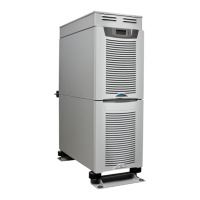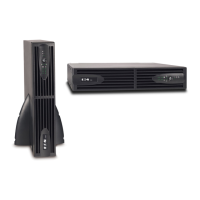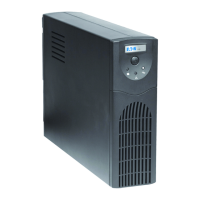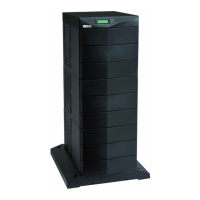P-164000477 9395P750 kVA / 900 kVA and 1000 kVA / 1100 kVA 138
Revision 002 User’s and Installation Guide
8 Communication
This chapter describes the communication features of the Eaton 9395P 750-1100 kVA UPS and
provides information about connecting hardware and using Terminal mode. For location of the
customer interface panels and terminals, see Figure 4-4 on page 36 and Figure 4-9 on page 44 through
Figure 4-11 on page 46.
8.1 X-Slot cards
The Eaton 9395P UPS has four X-Slot communication bays (see Figure 4-9 on page 44 for bay
locations). The UPS is compatible with the following X-Slot cards (see Figure 8-1):
• Modbus card - provides direct integration of UPS information (meters and status) to a Building
Management System (BMS) using the Modbus RTU protocol.
• The optional ConnectUPS-X Web/SNMP card - provides remote monitoring through a Web browser
interface, e-mail, and a network management system (NMS) using SNMP; connects to a twisted-
pair Ethernet (10/100BaseT) network. It has a built-in switching hub that allows three additional
network devices to be connected to the network without the requirement of additional network
drops. This card is provided as standard equipment with the UPS.
The Modem card cannot be installed in X-Slot 2.
• Modem card - provides “out-of-band” remote notification and monitoring using modem
communication directly to cell phones and pagers.
• Relay Interface card (AS/400) - has isolated dry contact (Form-C) relay outputs for UPS status:
Utility failure, Low battery, UPS alarm/OK, or On bypass when interfacing with IBM® AS/400
computers, other relay connected computers, and industrial applications.
• Industrial Relay card (IRC) - indicates the operating status of the UPS system using the customer’s
monitoring equipment. The IRC uses four isolated normally-open or normally-closed dry relay
contacts to indicate the UPS status. Normal, Bypass, Battery, and Alarm modes can be monitored.
• Power Xpert Gateway Card - provides a data gateway from the UPS to the Power Xpert software;
provides remote monitoring through a Web browser interface, e-mail, and a network management
system using SNMP; connects to a twisted-pair Ethernet (10/100BaseT) network. Modbus TCP
support provides direct integration of the UPS parameters to a Building Management System
(BMS). It has a built-in switching hub that allows one additional network device to be connected to
the network without the requirement of an additional network drop.

